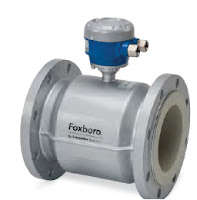 |
Diagram of a purged impulse line implementation.
(image courtesy of Lessons in Industrial Instrumentation
by Tony R. Kuphaldt) |
Purged impulse lines, or sensing lines, allow
process transmitters and
gauges to maintain operation under potentially adverse process conditions that may impact the operation or accuracy of the instrument. The purging of an impulse line is of particular use when sensing lines may have a high susceptibility to plugging by the process fluid. The line is purged with clean fluid at a constant rate, meaning new fluid is always being introduced into the impulse line. When the purge is properly set, a critical element of successful implementation, the pressure instrument is still able to correctly measure system pressure.
Purging a sensing line will require additional valves and devices to properly control the purge fluid flow and provide for effective maintenance or repair. Because of the increased relative complexity, a purging setup will likely be employed only in cases where other methods of maintaining clear sensor lines and proper instrument operation have been considered and rejected. The impulse line will stay free of sedimentation thanks to the purge fluid, and process fluid contamination of the sensing line is avoided.
One of the most important parts of the purged impulse line system is a restriction, implemented to prevent the
pressure instrumentation from sensing the elevated pressure of the purge fluid supply instead of measuring the original process fluid. The purge valve, through which the purge fluid flows, is left partially open instead of fully open. If the restriction does not mitigate the introduction of the purge fluid on the process line, then the flow rate of the purge fluid can adversely impact the process measurement. It is essential that purge flow be regulated in a manner that does not adversely impact the measurement of actual process conditions.
A basic requirement of sensing line purge systems is that the supply of purge fluid needs to be flowing at all times. Additionally, the purge fluid supply pressure must be maintained at a level greater than the process pressure because if the pressure of the purge fluid supply drops below the process pressure, the process fluid will flow into the impulse line. The purge fluid must also not react negatively with or contaminate the process and will be continuously consumed. Generally, purge rates are kept as low as possible, mitigating purge fluid impact on the process measurement and keeping the cost low. A rotameter, which indicates visual flow of the purge fluid, is an item typically paired with purge impulse line systems, and there are many options available for use as purge fluids.
Common gases for purged impulse lines include air, nitrogen, and carbon dioxide. A purge system can be applied to both gas and liquid process systems.
Share your process measurement challenges with instrumentation specialists. Combine your own process knowledge and experience with their product application expertise to develop effective solutions.


